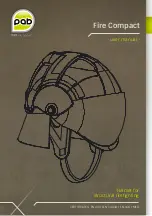
2
Evolution® Shortie RL Controlled-Rotation Dilator Sheath Set
Federal law restricts this device to sale by or on the order of a physician.
DEVICE DESCRIPTION
The Evolution® Shortie RL Controlled-Rotation Dilator Sheath Set is comprised of an inner polymer sheath
connected to a handle capable of mechanically rotating the sheath and an outer telescoping polymer
sheath. The inner sheath has a stainless steel tip at its distal end.
INTENDED USE
Evolution® Shortie RL Controlled-Rotation Dilator Sheath Set is intended for use in patients requiring the
percutaneous dilation of tissue surrounding cardiac leads, indwelling catheters and foreign objects.
Sheath Size
Sheath Set
9 Fr
LR-EVN-SH-9.0-RL
11 Fr
LR-EVN-SH-11.0-RL
Use With Other Devices
The Evolution® Shortie RL Controlled-Rotation Dilator Sheath Set may be used in conjunction with the
following catheter/lead extraction devices from Cook:
Locking Stylet
Lead Extender
Be sure to closely follow the “Suggested Instructions for Use” for each device used.
CONTRAINDICATIONS
None known
WARNINGS
•
Evolution® Shortie RL Controlled-Rotation Dilator Sheath Set should only be used to minimally
enter the vessel.
•
Do not attempt to negotiate the Evolution® Shortie RL Controlled-Rotation Dilator Sheath Set
past a bend in the vessel as vessel wall or cardiac lead insulation damage may occur.
•
When using dilator sheaths or sheath sets, do not insert more than one sheath set into a vein at a
time. Severe vessel damage, including venous wall laceration requiring surgical repair, may occur.
•
When using a Locking Stylet:
•
Do not abandon a catheter/lead in a patient with a Locking Stylet still in place inside the
catheter/lead. Severe vessel or endocardial wall damage may result from the stiffened catheter/
lead or from fracture or migration of the abandoned stylet wire.
•
Do not apply weighted traction to an inserted Locking Stylet as myocardial avulsion,
hypotension, or venous wall tearing may result.
•
Be aware that a lead that has a J-shape retention wire that occupies its inner lumen (rather
than being outside the coil) may not be compatible with the Locking Stylet. Insertion of the
Locking Stylet into such a lead may result in protrusion and possible migration of the J-shape
retention wire.
•
Weigh the relative risks and benefits of intravascular catheter/lead removal procedures in cases
when:
•
The item to be removed is of a dangerous shape or configuration,
•
The likelihood of catheter/lead disintegration resulting in fragment embolism is high or
vegetations are attached directly to the catheter/lead body.
•
Catheter/lead removal devices should be used only at institutions with thoracic surgical
capabilities.
•
Catheter/lead removal devices should be used only by physicians knowledgeable in the
techniques and devices for catheter/lead removal.
PRECAUTIONS
• When activating the Evolution® Shortie RL Controlled-Rotation Dilator Sheath Set be careful not to cut
or ensnarl lead suture-ties that are attached to the locking stylet targeted lead or to companion leads.
• Position the distal tip of the Evolution® Shortie RL Controlled-Rotation Dilator Sheath Set so that it does
not engage companion leads during activation.
• Prior to the procedure, consider the size of the catheter/lead in relation to the size of the LEAD
EXTRACTION™ devices to determine possible incompatibility.
• If selectively removing catheters/leads with the intent to leave one or more chronic catheters/leads
implanted intact, the non-targeted catheters/leads must be subsequently tested to ensure that they were
not damaged or dislodged during the extraction procedure.
ENGLISH



































